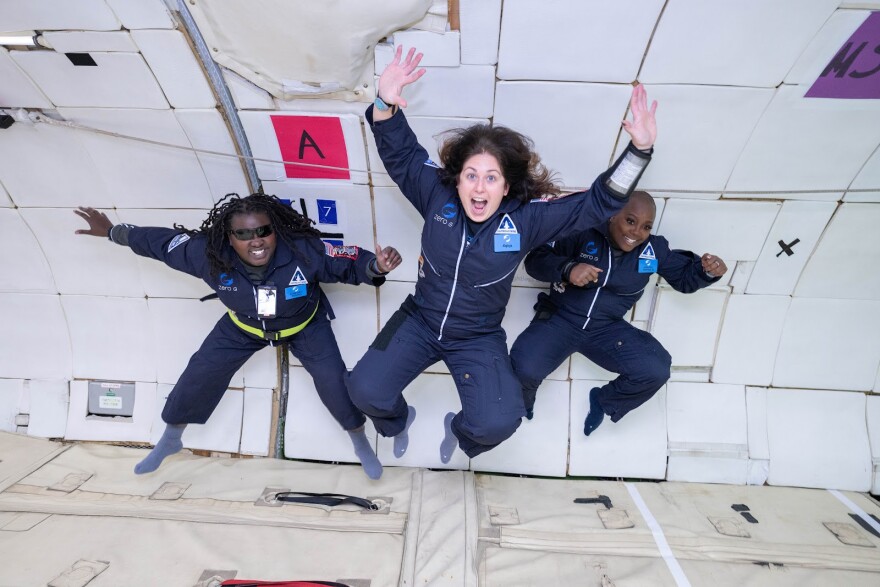K. Renee Horton aspired to be an astronaut while growing up in Baton Rouge, Louisiana, a few hundred miles away from NASA's headquarters in Houston.
A hearing impairment has so far kept that childhood dream from becoming reality, but Horton has nonetheless pursued her goal and become involved in the field of space exploration. She earned bachelor's and doctoral degrees in scientific disciplines and now works for NASA on its electric powertrain flight demonstrator project.
And on Thursday, while inside a simulated zero-gravity environment 25,000 feet above Ellington Airport, Horton got a taste of what it's like to spend time in space. She was one of 14 crew members with disabilities who took part in a weightless test flight, trying out accessibility features that could be used on spacecrafts as part of the AstroAccess project.
"This was that moment for me to really find out what it was like floating," Horton said Friday during a news conference about the test flight.
It was the first weightless research flight conducted by AstroAccess, which was co-founded by former NASA chief of staff George Whitesides and is part of the international nonprofit SciAccess. The organization aims to promote the inclusion of disabled persons in space and space exploration.
Thursday's crew members had vision, hearing and mobility impairments and represented the United States as well as Australia, Brazil, Germany and Spain. While in a Zero-G Corporation aircraft that simulated weightlessness by making a serious of parabolic maneuvers, the crew members completed tasks such as strapping themselves into a launch seat with a five-point harness, testing out textile graphics that could be used in emergencies by both blind and sighted crew members and studying the intelligibility of using American Sign Language in zero gravity.
They also demonstrated a system with sound personalization software, which allows users to tailor the audio to their hearing ability, to see if it could be utilized while communicating inside spacecrafts.
Anna Voelker, the AstroAccess co-founder and executive director, characterized the flight as a success in a news release. She said that, coupled with the European Space Agency's recent announcement that disabled person John McFall would be part of its 2022 astronaut class, illustrates "strong movement" toward the goal of inclusion in space.
"It is very hard to predict how people with different abilities and different bodies will react to a zero-gravity environment without putting them there," said crew member Lucas Radaelli, a blind software engineer for Google who is originally from Brazil. "There are so many things we can still discover by doing these experiments. Only by making space accessible can we find what's going to work and what's not going to work."
Crew member Eric Ingram of Scout, Inc., a company that develops orbital products and services, said people with disabilities are in some cases better equipped to travel in space. Someone with amputated legs, for example, might be able to move more freely in a small, gravity-free environment than a tall person.
Lindsay Yazzolino, a nonvisual designer who is blind, described weightlessness as initially nervewracking but ultimately empowering and liberating.
"My favorite moment was realizing that I could do whatever I wanted and spin and roll," she said.
Another crew member, Sheri Wells-Jensen, an associate professor at Bowling Green University in Kentucky, said she hopes the test flight continues to further AstroAccess's mission while also inspiring others – whether they are disabled or able-bodied. The spacecraft design features proposed and tested through the program are aimed at being useful for all types of astronauts.
Wells-Jensen challenged others to find their passions and pursue them, regardless of the obstacles they might face, much like Horton has done.
"Don't let anybody tell you you should not be a scientist or artist or anything you want to be," Wells-Jensen said. "And make sure you're having a ripping good time while you're doing it."
Copyright 2022 Houston Public Media News 88.7. To see more, visit Houston Public Media News 88.7. 9(MDAwMTM1NDgzMDEyMzg2MDcwMzJjODJiYQ004))

